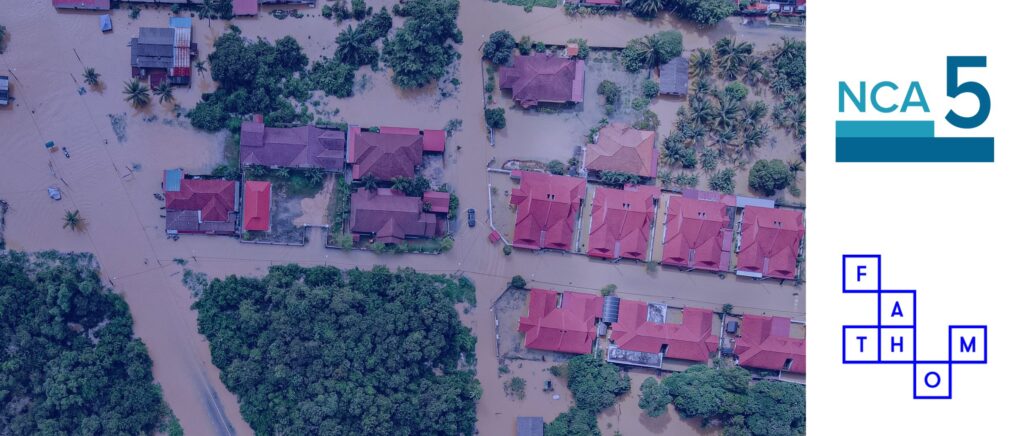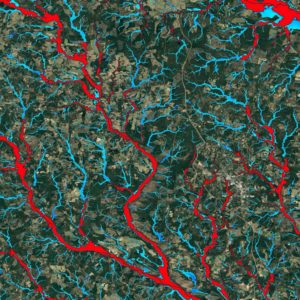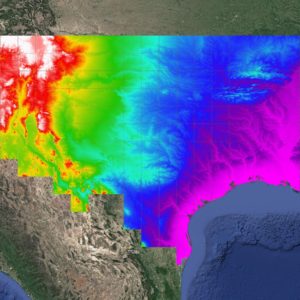
In November 2023, President Biden announced the release of The Fifth National Climate Assessment (NCA5); a comprehensive report on climate change, its national and regional impact, and strategies for reducing present and future risk.
It’s a lengthy report, which delves into all aspects of society including water, energy, land, agriculture, the built environment, transport, human health, indigenous populations, economics, justice systems and more.
Each section is a collection of academic research into the topic, assessing:
- The current status of the indifferent industries (and regions)
- An analysis of the adaptation activities that need to be implemented to adequately address risks
- The mitigation strategies that should be put in place to reduce or eliminate the effects of climate change.
Given the report’s size, each section is also distilled down into a series of key messages.
What is the National Climate Assessment’s history?
The Global Change Research Act of 1990 mandates that the US Global Change Research Program must deliver a report to Congress and the President no more than every four years. It must be a report that “integrates, evaluates and interprets the findings of the Program and discusses the uncertainties associated with such findings”. Crossing everything from transportation and energy, to land use and the natural environment, through to human health and social systems, it must “analyze current trends in global change, both human-induced and natural, and project major trends for the subsequent 25 to 100 years.”
The November 2023 National Climate Assessment represents the fifth report published since The Global Change Research Act of 1990 was created.
Our research Fathom’s inclusion in NCA5
We are incredibly proud to see scientifically validated research written by Fathom’s experts referenced consistently throughout the report, both in relation to the national topics and also in the regional-specific sections. Conclusions from our research even feed into the assessment’s primary infographic, which sits on the NCA5 homepage.
Seeing our research form a cornerstone of the report’s academic citations is fantastic testament to the leading work we have created, and will continue to create in the future.
References to Fathom’s work include:
Inequitable patterns of US flood risk in the Anthropocene
Research into ‘Inequitable patterns of US flood risk in the Anthropocene’ led by our Chief Research Officer Dr Oliver Wing and published in Nature Climate Change is referenced throughout the report, including in the Overview in a section around how ‘climate change exacerbates inequities’. Statistics from the same paper exploring how the future increase in flood risk will disproportionately impact Black communities are also used in Figure 1.9 and repeated in the Water section as Figure 4.14.
Social inequalities in climate change-attributed impacts of Hurricane Harvey
A paper on ‘Social inequalities in climate change-attributed impacts of Hurricane Harvey’ published in Nature Communications and co-authored by both Dr Oliver Wing and our CTO and Co-Founder Dr Christopher Sampson is extensively referenced throughout NCA5.
Attributable human-induced changes in the magnitude of flooding in the Houston, Texas region during Hurricane Harvey
Another paper on the same hurricane, titled ‘Attributable human-induced changes in the magnitude of flooding in the Houston, Texas region during Hurricane Harvey’ is also continually cited. This was published in Springer Link and co-written by Dr Christopher Sampson.
Increased flood exposure due to climate change and population growth in the United States
Research led by Dr Daniel Swain, and co-authored by Dr Oliver Wing and our Chairman Professor Paul Bates exploring ‘Increased flood exposure due to climate change and population growth in the United States’ is used in Section 2: Climate Trends.
Estimates of present and future flood risk in the conterminous United States
A paper written by multiple Fathomers including Dr Oliver Wing, Professor Paul Bates, Dr Andrew Smith and Dr Christopher Sampson published in Environmental Research is referenced in Chapter 12: Built Environment. The paper explores ‘Estimates of present and future flood risk in the conterminous United States’.
A benefit-cost analysis of floodplain land acquisition for US flood damage reduction
Research on ‘A benefit-cost analysis of floodplain land acquisition for US flood damage reduction’ which was published in Nature Sustainability and written by a group of eight authors including Dr Oliver Wing, Professor Paul Bates, Dr Christopher Sampson and Dr Andrew Smith. It is referenced multiple times in the report, such as in Chapter 12: Built Environment and Chapter 24: Midwest.
Key statistics from NCA5
After reading The Fifth National Climate Assessment, we have compiled the main statistics around flood risk in the US and turned these into a one-page infographic.
Fill in the form to receive a download of this infographic and discover the key statistics.
What does the NCA5 mean for industry?
With the release of The Fifth National Climate Assessment, President Biden hopes to equip Americans with the best available science and understanding of climate change impacts in the United States.
To correspond with the assessment’s findings President Biden announced more than $6 billion in additional investments to make communities more resilient to the impacts of climate change. Here is how that funding is being allocated:
What does the NCA5 mean for insurers?
A key message highlighted throughout the ‘Regions’ sections of the report is the potential risk of financial hardship faced by US homeowners and businesses, caused by a lack of flood insurance. It explains how the risk of flooding disproportionately impacts certain communities, which is then further exacerbated by a lack of funding available for recovery. And with climate extremes on the rise, private insurers are predicted to abandon the high-hazard areas, further exacerbating the insurance gap and placing uninsured consumers at greater financial distress.
While the National Flood Insurance Program has attempted to bridge the gap, it is clear that further funding into public flood insurance programs is needed to address the inequalities and provide affordable insurance premiums, without the risk of bankrupting them.
What does the NCA5 mean for engineers?
The new funding of particular interest to those working in flooding is:
The $3.9bn addition to the Bipartisan Infrastructure Law, which will help strengthen and modernize the electric grid to reduce the impacts from extreme weather and natural disasters, while also increasing capacity, unlocking renewable energy resources and mitigating system faults.
A second round of funding ($300 million) allocated to Swift Current, to help communities recover from flooding experienced in recent years and become more resilient to future events.
$166 million from the Inflation Reduction Act to meet critical ecosystem resilience, restoration and environmental planning needs for the National Park Service, whose projects include managing floodplains in the Northeast, and developing a comprehensive flood-risk geospatial layer for historical buildings, structures and cultural landscapes across DC, MD, VA and WV.
Over $140 million in grants made available through the America the Beautiful Challenge, for the National Fish and Wildlife Foundation, who accept applications for projects that restore wetlands and forestry, and improve the ecosystem and community resilience to flooding.
What does the NCA5 mean for financial markets?
According to the NCA5, not all investments are being reported. Those that are reported are estimated to be unevenly distributed, uncoordinated and inadequate. And deciding where to invest – and how much – means working with uncertainty.
Some entities have employed benefit-cost ratios to mitigate the effects of climate hazards via adaptation planning. The National Institute of Building Sciences suggests a 4:1 benefit-cost ratio for hazard mitigation effort. Federal grants directed towards resilience are projected to yield an even more favorable 6:1 benefit-cost ratio. Despite this, challenges like financial constraints, risk perception, inadequate incentives, community capacity, competition priorities and political influences can lead to underinvestment. Another key challenge is whether these hazards can be attributed to climate change versus other factors – the difference between climate-influenced and climate-attributed are difficult to define and leads to differing interpretations of regulatory climate reporting.
In the face of this uncertainty, investors and companies are still viewing climate change mitigation as a business necessity and even an opportunity. Between November 2020-2021, the number of companies around the world committing to reduce their carbon footprint down to ‘net zero’ grew from 30 to more than 450. And a growing number of investors and asset owners have committed to evaluate and disclose their climate risks. By September 2022, 3,400 organizations from across 95 countries had shown public support for the Task Force of Climate-Related Financial Disclosures. The United Securities and Exchange Commission have also proposed a mandatory climate financial risk disclosure, similar to that of the UK.
However, a gap is growing between the large corporations and small- and medium-sized enterprises. For the latter, navigating intricate reporting standards could be impacting their competitiveness and access to financing. More awareness is needed to help ensure all organizations can successfully undertake climate reporting.
Our response to NCA5
It is great to see this report shining a spotlight on the key issues impacting adequate flood risk adaptation and mitigation.
We are heartened to see increased funding available to different industries across the US, to help manage and mitigate the devastating effects of flooding on communities and their critical infrastructure.
Our US Flood Map represents the most technologically advanced, comprehensive flood map for the United States. If you’d like to learn more about the research behind NCA5 or explore how our US Flood Map can support your access to this new funding and help deliver flood and financial resilience in your region, book a demo with our team.
The image to the right compares Fathom’s hazard data (blue) with FEMA’s data (red) – highlighting the limitations of FEMA data in understanding US flood risk.




Fathom’s work with the Texas Water Development Board
In 2019, the Texas Legislature tasked the Texas Water Development Board with delivering the first-ever statewide flood plan for the State of Texas. 15 regional planning groups were formed, who began identifying and compiling all their flood-related data into a Flood Planning Data Hub. However, the resulting ‘flood quilt’ had gaps. Over 60 counties didn’t have any existing flood maps.
Where regional flood data was either unavailable or outdated, the Texas Water Development Board worked with engineering firms to help supplement their data.
To meet the project’s needs, Fathom was also brought on board to create a 10ft Digital Elevation Model of the entire state, using over 300,000 individual laser altimeter tiles (i.e. LiDAR). A customized hydraulic model was then run over this DEM, to provide pluvial (rainfall), fluvial (river) and coastal flooding at four different frequencies, across the whole State of Texas.
Book a demoWant to learn more about our work?
Find out more about Fathom’s award-winning flood maps and catastrophe models by speaking to our team. Fill in the form to request a demo and a member of the team will be in touch to find a time that works for you.
